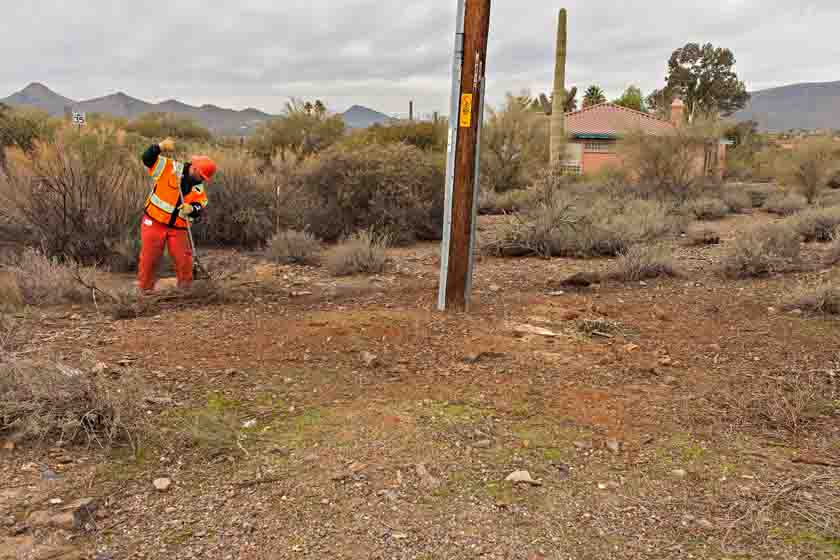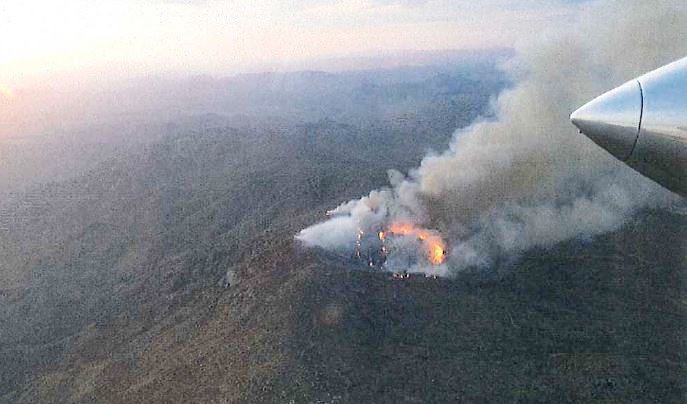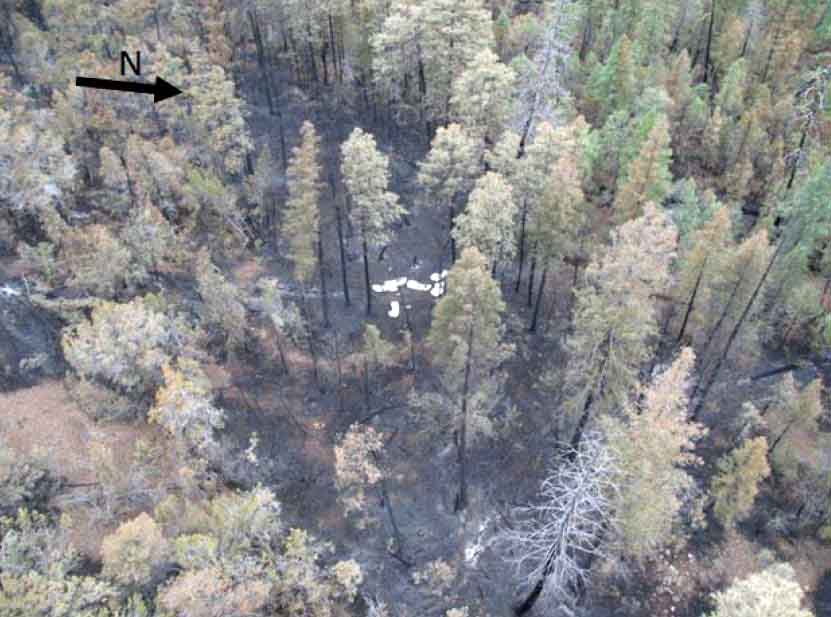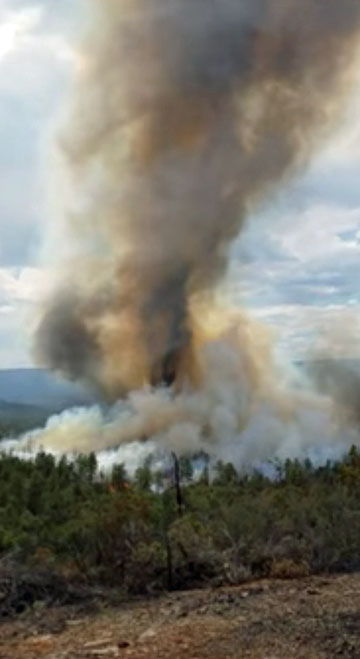Above: The power pole hazard mitigation crew’s sawyer flush cuts a palo verde stump.
By Tom Story
“As Arizona’s largest utility, there are fire risks we have to manage,” said Wade Ward, Fire Mitigation Specialist for Arizona Public Service (APS). “The primary goal of fire mitigation is to prevent fire from ever happening. The second is to provide safe and reliable electricity to the communities APS serves. Just as important is the ability to provide for firefighter safety around our system in the event of a fire”, Mr. Ward continued. “With five thousand miles of transmission and twenty-eight thousand miles of distribution it is hard not to have our system affected by wildland fire. When this happens, APS’s priority is providing a safe environment for crews to work in”.

Mr. Ward knows fire (he joined APS after his fire career at the Prescott Fire Department) and he has seen factors like drought, climate change and forest management set the stage for larger and more powerful wildland fires. “It is becoming more evident that due to extended drought over the past decade forest and vegetation ecosystems have been stressed from the lack of regular moisture compounded by shorter drier winters and longer warmer summers,” Mr. Ward said.
APS sends out inspectors to identify hazardous vegetation in violation of its safety and reliability clearance standards as well as violations of the National Fire Code and the Urban Wildland Interface Code (which state that a utility with equipment attached to the pole must clear all vegetation 10 feet in all directions including 10 feet from the ground). The area around the pole is cleared by work crews to create defensible space. “There are approximately 70 thousand poles within our system that we will have on a three year return cycle to maintain Defensible Space Around Poles (DSAP)” said Mr. Ward.
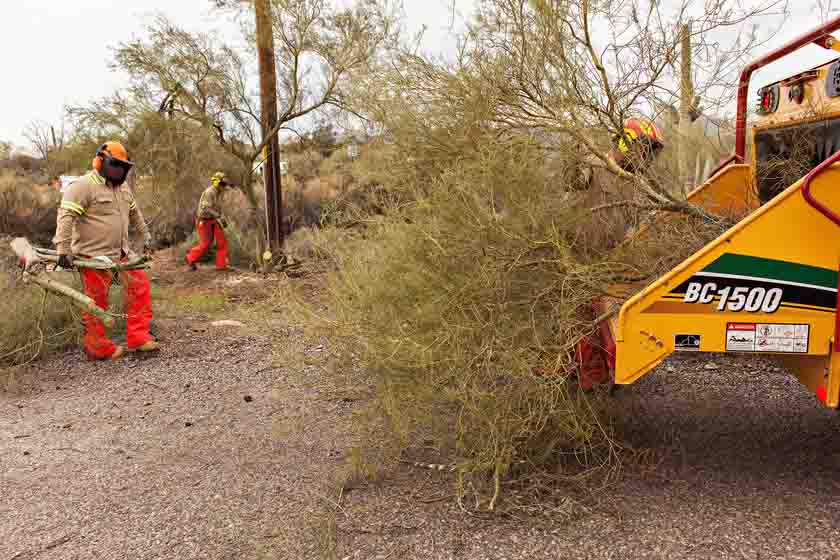
The clearing is being done using manual methods (including chain saws, string trimmers and other hand tools) and where approved is followed by the application of herbicide in compliance with Environmental Protection Agency’s Integrated Vegetation Management practices. APS has prioritized the treatment of subject poles by utilizing data derived from a risk assessment done across the state. Mr. Ward continued; “It is a part of our core values at APS Forestry to manage vegetation and the environment by balancing benefits to create healthy forests and safe reliable energy”.
Mr. Ward finished his remarks noting, “In 2016 we created 110 acres of defensible space around the state of Arizona. One pole at a time”.
